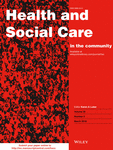Improving the effectiveness of interpreted consultations: Australian interpreter, general practitioner and patient perspectives
Abstract
Healthcare consultations with patients lacking English proficiency are challenging for all parties, even in Australian primary care where the engagement of interpreters is encouraged and fully subsidised. Our objective was to understand these challenges from the perspectives of interpreters, patients and general practitioners in order to improve the effectiveness of interpreted consultations. Our investigator team approached the interpreted consultation as an interprofessional collaboration. A convenience sample of seven general practitioners, eight health interpreters and six representatives from culturally and linguistically diverse communities (representing the patient perspective) participated in three separate focus group discussions, lasting 60–90 min each, exploring participant experiences with healthcare consultations in which interpreters were present. Two semistructured interviews were undertaken subsequently with three additional community representatives purposively recruited to increase participant diversity. Data were collected in 2016 and analysed inductively using a method of constant comparison to identify, and reach consensus on, key emerging themes. All participant groups emphasised the importance of working with trained interpreters, rather than relying on family interpreters or a doctor's own second language skills. Although participants reported experiences of effective interpreted consultations, other reports suggested that some doctors are unaware of, or have difficulty following, accepted guidelines about speech, gaze and turn-taking. Challenges identified in relation to interpreted consultations fell into the five themes of contextual constraints, consultation complexity, communication difficulties, the interpreter role and collaboration. Some general practitioner participants appeared to be unsure and anxious about the etiquette of interpreted consultations, and there was some confusion between and within participant groups about interpreter roles and professional codes. A briefing session prior to the consultation, clarifying the roles of all parties, including any family or bicultural workers present, may help to establish respectful, flexible and effective interprofessional collaborations and to encourage participants to directly address any problems during the consultation.




